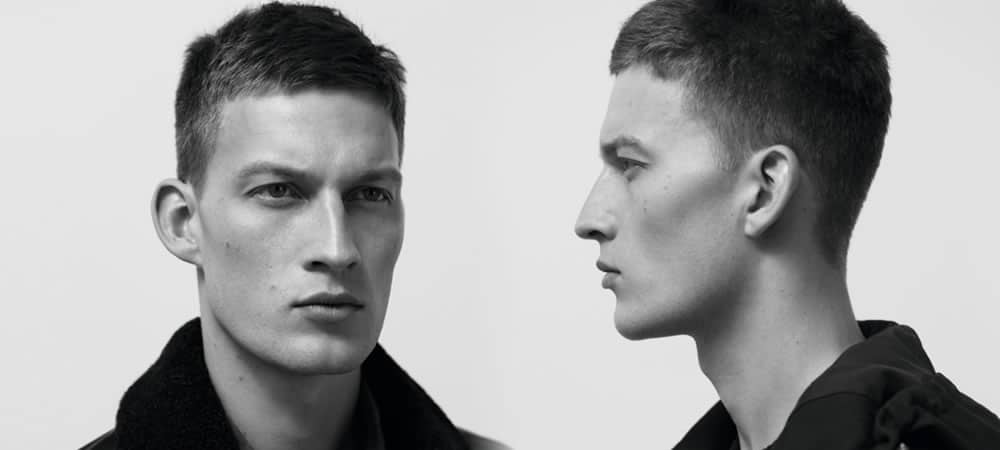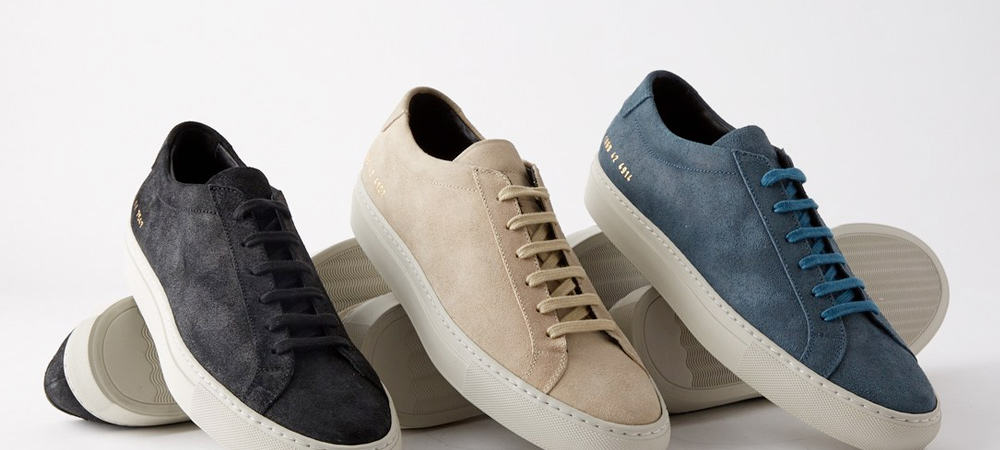Staying well-groomed is not nearly as effortless as it should look. From mastering tie knots to keeping your toenails from sprouting their own toenails, the official list of requirements for looking good seems to grow longer by the day.
You can make the task of looking constantly vaguely presentable easier with four simple words: short, back and sides. Like an impeccably tailored suit (only less expensive), opting for this king of the cuts is your quickest route to looking good without even trying. You save time and can press snooze a few more times in the morning: you don’t need us to tell you it’s a winner.
Not all short back and sides haircuts are created equal, though. Here are the key men’s haircuts to consider if you want to smarten up.
The French Crop
Requiring minimal maintenance, the French crop is a fuss-free cut that’s still flexible enough to be tweaked to taste. “A French crop is basically a short haircut, not quite military-inspired but pretty tight on the sides and generally, the hair on top is worn forwards as a cropped fringe,” says Charlie Cullen, international artistic director at British hairdressing brand Toni & Guy. “The styling on this cut can be minimal as the hair is short, worn forward and not too fussy.”
Ask your stylist or barber to take the hair very short through the back and sides, while leaving the hair on top slightly longer (a couple of inches at most). The ‘crop’ part of this style’s name comes from the top section’s choppy, textured finish.
As for the front hairline, you can either ask to have your fringe cut short and neat or keep some length for styling forward across the forehead.
Classically masculine, the French crop suits guys of any age and face shape, provided your stylist or barber makes subtle alterations to suit. Round faces, for example, will benefit from especially short, sharp sides and plenty of texture through the top section to add some height; meanwhile, it’s better to frame longer faces with longer sides (to add width) and a slightly flatter top section.

How To Style
To style the French crop, always remember to apply product to damp or dry hair. “I’d recommend using matte paste for a dry natural feeling so it’s showing off texture without being overstyled with heavy product,” says Cullen.
For a shinier, glossier finish however, use pomade or grooming cream rubbed messily into your hair with your fingers.

The Quiff
A natural born showstopper, nearly every man’s tested a quiff out at least once in his life, and its beauty lies in the fact that it can be worn as subtle or extreme as you like. Any stylist or barber worth their salt will know that a quiff is all about length and volume at the front, so striking a balance is key when it comes to this cut.
“Ask for long enough length in the front so that you can actually wear and style it worn up away from the face,” says Cullen. “If it’s too long it will flop down. Generally a quiff works better when it’s not texturised – when it has too much texture it doesn’t look as groomed or classic.”
If you take the back and sides particularly tight while leaving a good deal of length on top, your quiff will look much more dramatic due to the extreme contrast – so have a clear idea in mind as to how you want your quiff to look before your stylist or barber starts chopping. The crown area of your hair also needs to be cut shorter to allow the quiff shape to stand out.

How To Style
Unlike more rough and ready short, back and sides hairstyles, the quiff likes to be put in its place and stay there: you’ll need a bit of skill and a lot of precision to style well.
“To style the quiff apply a thickening tonic to wet hair then use a small vent brush to stretch the roots of your hair while applying heat from a hairdryer to create volume and roundness at the fringe,” says Cullen. “To avoid going too retro and Elvis like, undo the style afterwards a little bit by running some soft wax through it.”

Textured & Undone
If you’re more bedhead than painstakingly sculpted Lego hair, a low-fi, ‘undone’ take on this hairstyle is likely your best bet.
“The textured short back and sides cut that you should go for depends on the thickness of your hair,” says Cullen. “If it’s fine don’t go as short with your fade on the back and sides as it will expose your scalp. Ask for the top to be point cut or cut with a razor to give a rougher, rugged texture – think classic Brad Pitt during the 90s.”
Thanks to its relaxed structure, an undone style frames most face shapes well. That said, to ensure yours is shown in its best light, whoever is cutting your hair should maintain the right balance between the length of the hair on top and that at the back and sides to keep your mug from going woefully off-balance.

How To Style
You can further iron out any natural head quirks with = styling. If you want to add length to your head, give it some height by working a volumising product into the roots first.
But, if you’re all about that get up and go life, then thankfully you can do practically nothing with your styling and still end up looking decent. “Apply a sea salt spray to wear hair, scrunch your hair with your hands then let it dry naturally or blast with a hairdryer,” says Cullen. Bish, bash, bosh.

The Modern Fauxhawk
Kind of a quiff-lite, the fauxhawk sits somewhere between the easiness of a French crop and a statement style like the pompadour. “It’s a bit like a mohican but a lot more modern – think ex Directioner Zayn Malik for inspiration,” says Cullen.
Whether you opt to take the back and sides really short to emphasise your fauxhawk, or keep it all a little longer for a more even keel, it’s essential to leave the front section – the focal point of this look – longer than the rest, but within reason. “While the haircut needs to be left longer in the middle to qualify as a fauxhawk, you only need a few inches of length so it’s not too [much like] David Beckham’s extreme mohawk from the noughties,” says Cullen.

How To Style
When it comes to styling, the fauxhawk is surprisingly versatile; keep the front neat and tidy for a smarter, work-appropriate look or go messier if you don’t like (or need) to look too put together.
“It’s quite a textured haircut that needs to be styled to keep the centre looking its best. I’d use a deconstructor or texture paste to style the messily towards the centre without making it look uniform or ‘glued’ in appearance.”

The Side Parting
Slick and neat, the side parting is the undisputable daddy of smart hairstyles, but it takes some prep to ensure yours is on-point.
Before getting your hair cut for a side parting, take time to establish which way your hair sits so that you can cooperate with Mother Nature. “Look at your natural growth pattern on the front of your hairline – it’s better to work with the hair than against it, so see which direction your hair naturally pushes over towards and cut and style your hair accordingly,” advises Cullen. “Ask for a little bit of longer length in the fringe, but it shouldn’t be too short on the sides as little err too close to literally mimicking Peaky Blinders style.”
It’s a good shout to discuss with your barber or stylist how prominent you want your parting to be too, as that will impact how your hair is cut. By having them taper your back and sides tightly, your side parting will look even sharper. And if you want your parting to be the focal point of this take on the short, back and sides, ask for a hard parting to be shaved in.

How To Style
The way you should style a parting depends on your face shape. If your face is round, try to avoid creating a parting that’s too slick or flat as its clean lines will look at odds with your face. Instead, consider a hair-dryer and blow-dry some volume into your hair.
When it comes to product choice, comb through something such as a wax for a glossy, red carpet worthy finish, says Cullen. Alternatively, if you’re not a fan of the wet look a lower shine defining paste will look neat without appearing overly styled or greasy.





